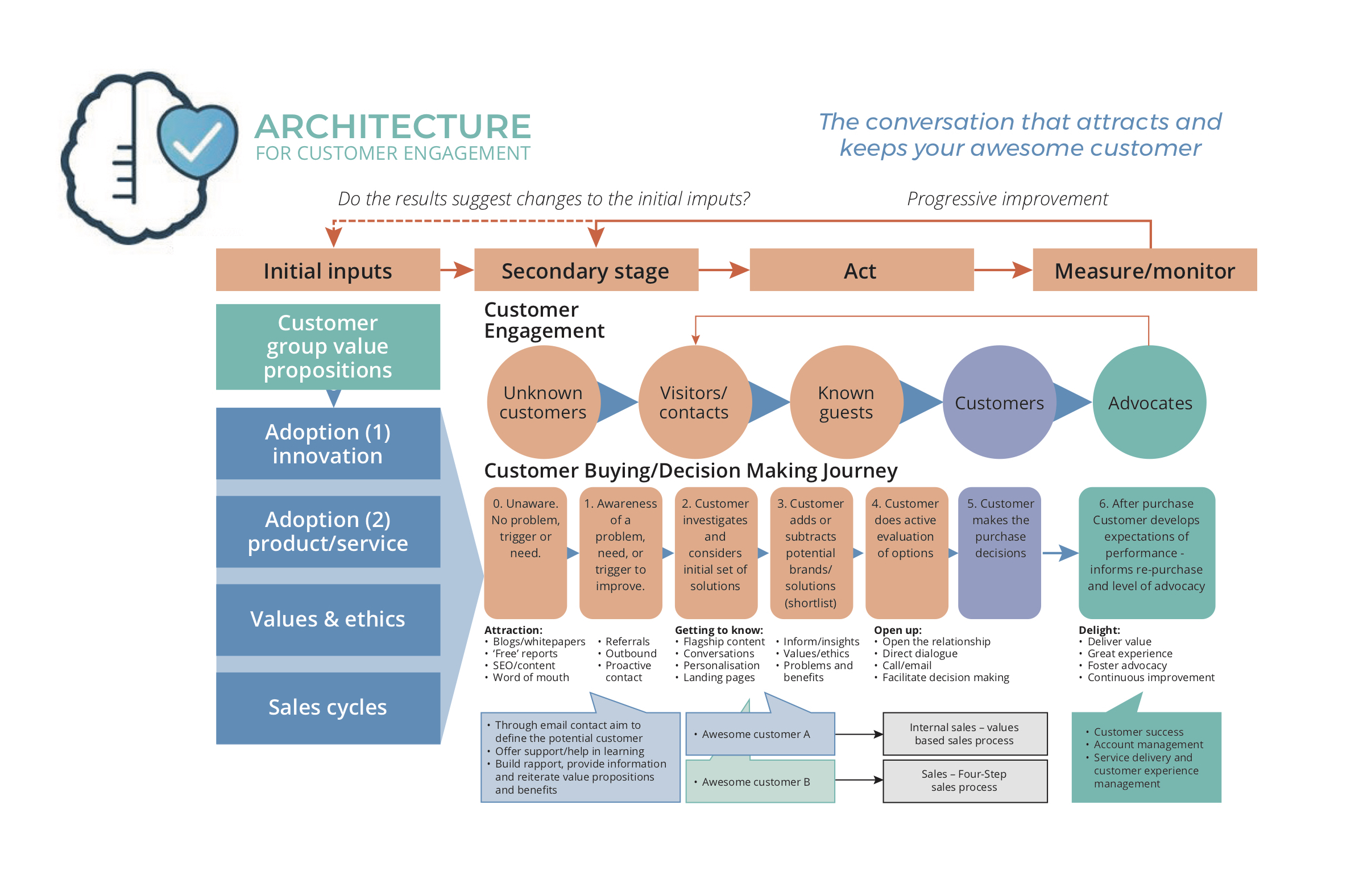We need to design businesses for profit, not just selling products or services. Profitability is derived from the customer portfolio. Through our customer engagement efforts we can build profitable customer portfolios, and businesses, relevant for the experience economy. I call this, Profit by Design.
So many businesses put a huge amount of effort into the development of their products and services. Yet, when the product is ready, it’s a quick hand-ball to the sales and marketing teams and “go sell it“. This worked just fine during the last century.
In the industrial age, the whole focus was on production at lowest cost, on mass, then distribute the product to eagerly awaiting consumers who would be converted by armies of salespeople.
In this digital age many things have changed, predominately how customers behave and buy. Today, we are in an economy driven by their experiences. This age is often called the ‘age of the customer’, and businesses need to adapt to this new age.
Profit by Design
Profit by Design takes an approach that recognises the changes in how customers buy. It looks at how we can build a profitable business in this age and economy. Profit by Design is founded on a set of key principles (you can read in this companion article). And then applies the Architecture for Customer Engagement to deign business activity to achieve higher levels of business profitability and resilience.
I have gained a series of insights from working with dozens of organisations over the last 20 years. These insights help us see that our ‘normal’ business practice does not apply in this new age.
Let’s have a quick look at these insights and then we can examine the design architecture.
Insight One
Revenue and profitability for any business comes from customers. Products and services may be the thing that customers buy, but it is the total sum of customers who buy, how they buy and what they say about the products and services. Essentially, your customer portfolio is the key determinant of the profitability of your business. How these customers spend, stay with you and how they advocate (or not) (see the article on Customer Lifetime Value).
Insight Two
Most businesses have a customer portfolio configuration that has 80% of profit coming from 20% of their customers. Conversely 80% of their customers only contribute about 20% of profit back to the business (for some businesses it is pushing 90/10..!). I first discovered this in financial services and then as I consulted to a broad range of businesses, I found the pattern to be consistent across, industry and businesses.
Insight Three
Organisations create these customer portfolios (that roughly follow Pareto’s 80/20 principle) through an obsessive focus on revenue or sales numbers. These businesses are mislead by the ‘eight-great traditions of sales’ that are a hangover from the last century.
Insight Four
Not all customers are equal. A business that recognises this will see the folly in selling to anyone who will buy. You will end up with a customer portfolio where 20 percent of customers represent 80 percent of value. But it is not only about the dollar value of these customers.
Different customer groups also represent different value to the business based on their will to be advocates. Word-of-mouth has always been important to businesses, but today customer word-of-mouth is on steroids, which leads on to the final two insights.
Insight Five
Engagement with customers should be about attracting and keeping your awesome customer. These customers are the ones where there is a mutual Two-Way Exchange of Value. Sometimes businesses take advantage of customers, sell them something at a healthy margin and see it as an opportunistic win for the business. Some customers ‘cherry-pick’ value from suppliers. They take the best deals for them from one supplier, but stay (somewhat) reliable to another.
Customers are looking for value. This value can be defined in several different ways. The main thing is about how they perceive the value from the business.
For businesses the challenge is to understand how the Two-Way Exchange of Value works for them and the customer, then attract those awesome customers.
Insight Six
Customer engagement is not about closing sales but opening relationships with promoters of what you do. These are your awesome customers, the ones that get the Two-Way Exchange of Value. We have an ongoing relationship with these customers. Your awesome customers is not a “deal” that is closed. Even if your customers only buy your product or service once, the power of their advocacy is enduring.
It is the role of the leader to design the optimal activity to be delivered and implement.
And then coach and fine-tune the design over time.
The Architecture for Customer Engagement

The Architecture for Customer Engagement is a framework we can use to help design how we attract and keep those awesome customers – the ones that are the profitable promoters of what we do.
The Initial Inputs
- This phase is about identifying your awesome customer groups and then getting your value proposition right for those customers at two levels (why you and then about what you do).
- Adoption – knowing what customer-market you are in. Are your customers in the early adopter, the majority stage? You need to know where to find your awesome customers. Then how you want your customers to adopt your products/services has to match how you initially engage your customers.
- Customer engagement activity needs to be aligned with the ethics and values you want to be known for. People buy emotionally. They will feel your engagement as much as anything else.
- (These Initial Inputs are best described and documented in your Customer Strategy).
Secondary Stage
With the initial inputs are figured out, let’s move on to your specific customer. How does your awesome customer make decisions? Understand how they make decisions and then align the optimal engagement activity to support the goal of creating profitable promoters. Congruence across the engagement activity is critical. Customers buy emotionally, and then seek rational information to justify the decision. If the customer get the feeling something isn’t right, they will opt out of the process.
The Goal is: to open a relationship with your awesome customer where there is optimal Two-Way Value Exchange.
The Result is: profitable customers who are promoters of what you do.
Once we have designed the Architecture for Customer Engagement, we need to implement. This is not a once only, set and forget approach, it is ongoing process of improvement.
- Act – execution/implementation. You have the design, now implement. Once you have implemented you can start learning more about what is working.
- Measure / Monitor – Measures give us feedback on how we are achieving our goals and results. Design performance measures to give you meaningful feedback on how your implementation went. Then assess how accurate the design of your engagement activity is. Learn, fine-tune, progressively improve.
Essentially the process is:
Engagement Design – Act – Measure/Monitor -Learn – Fine-tune Design – Act – Measure/Monitor – Learn. Repeat and repeat.
Profit by Design is an application of the Five Tenets of the Customer Centric approach to Business, and the Nine Imperatives for Leaders (read more here). The application above is about customer acquisition, and how we create customer portfolios that are full of profitable promoters.
Profit by Design is offered as a two-day workshop, or through a consulting/mentoring model (find out more on this page).
Learn more about the Profit by Design book here.
Hear about the Architecture for Customer Engagement, in this short video from a Profit by Design presentation:



